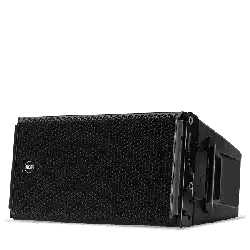Loading ...
Loading ...
Loading ...

Every time the user changes flybar tilt, splay angles, humidity, temperature or height of the array, the software
automatically recalculates the presets. It is possible to save and load a project of the Shape Designer using the “Setup”
menu.
The autosplay algorithm was developed for optimum coverage of the audience size. The use of this function is
recommended for the optimization of the array aiming. A recursive algorithm chooses for every cabinet the best angle
available in the mechanics.
It is also possible to export as a text file the presets configuration for air and humidity absorption to RDNet using the
“Presets” menu.
Refer to next chapter or to the RD-Net manual for more information about this functionality.
RECOMMENDED WORKFLOW - EASE FOCUS 3
Pending the official and definitive simulation software, RCF recommends the use of RCF Easy Shape Designer together
with Ease Focus 3. Because of the need of interaction between different software, the recommended workflow assumes
the following steps for every array in the final project:
1. RCF Easy Shape Designer: audience and array setup. Calculation in “autosplay” mode of flybar tilt, cabinet, splays,
Low Frequency preset and High Frequency presets.
2. Focus 3: reports here the angles, tilt of flybar and presets generated by Shape Designer.
3. RCF Easy Shape Designer: manual modify of splay angles if the simulation in Focus 3 does not give satisfactory
results.
4. Focus 3: reports here the new angles, tilt of flybar and presets generated by Shape Designer.
Repeat the procedure until good results are achieved.
NOTE: the 3D model inside the GLL file permits inside AFMG Focus the selection of the “Local” presets. This implies
the use of 4 of the 15 presets for the simulation. This limitation will be overcome with the release of the official RCF
simulation software.
LOW AND HIGH FREQUENCY MANAGEMENT
LOW FREQUENCY PRESETS
In the low frequency range the interaction between the sound of single cabinets produces an increase of sound level in
low frequencies proportional to the number of loudspeakers that make up the cluster. This effect unbalances the global
equalization of the system: the interaction between the loudspeakers decreases, increasing the frequency (they become
more directive).
For the control of the displacement described above it is necessary to reduce in the global equalization the level of the
low frequencies progressively reducing the gain if the frequency decreases (low shelf filter). The RCF Easy Shape Designer
software helps the user to give a recommended cluster preset.
The preset is suggested by the software considering the number of the cabinets in the cluster: the final tuning of the
system should be done with measurements and listening sessions, considering the environmental conditions.
LOW FREQUENCY PRESET USING RD-NET
In RDNet software nine presets are available: from Shape Designer it is possible to export the recommended cluster
preset and it could be imported directly on RDNet. The export/import procedure is the same for the High or Low
Frequencies and it will be explained in the following paragraphs.
The tuning of the system (presets change) should be done in RDNet selecting all the cabinets in the cluster and using
proper buttons (up and down arrows) to increase or decrease the number of the preset.
Loading ...
Loading ...
Loading ...
